Meet the grow-your-own gurus
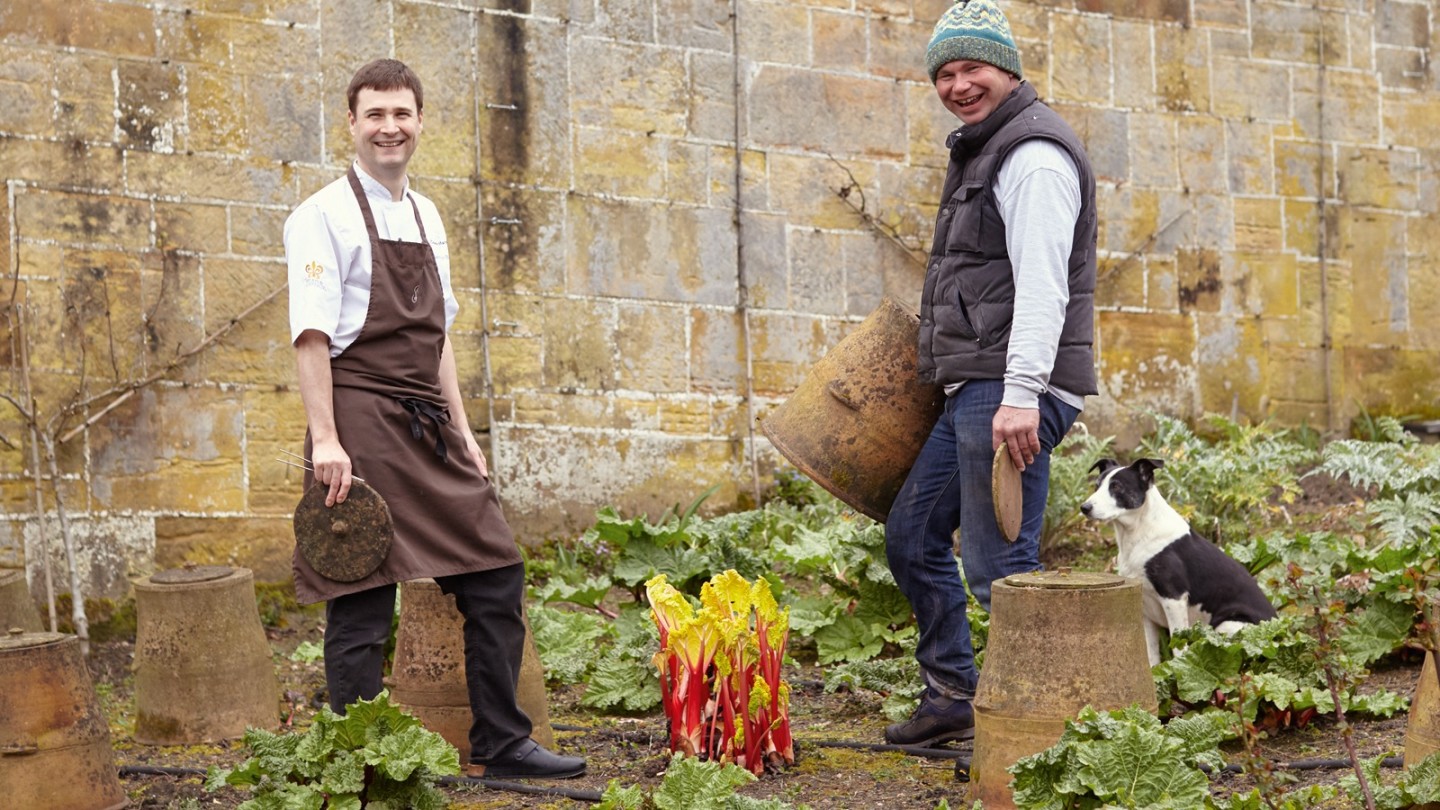
Roula Khalaf, Editor of the FT, selects her favourite stories in this weekly newsletter.
Before Gravetye Manor temporarily closed due to the coronavirus crisis, Tom Coward liked to regale visitors with stories about peaches. The head gardener at the atmospheric Elizabethan country-house hotel presides over 35 acres of gardens and meadows nestled in the rolling Sussex landscape – a domain that includes a vast peach house. Varieties such as Red Haven, Francis and Peregrine are fan-trained across the glasshouse, hand-pollinated each spring and harvested in succession right through the summer. If you calculated how much the peaches cost to produce, they would make no commercial sense. “They’d cost well over £100 each,” says Coward, “but they are the most amazing peaches you will ever taste.”
Since arriving at Gravetye in 2010, Coward has overseen one of England’s most awe-inspiring horticultural reawakenings. He brought with him three years’ experience from Sussex garden Great Dixter, one of the most dynamic and experimental gardens in the world. The influence of his time working under the charismatic Fergus Garrett can be seen in Gravetye’s intoxicating flower borders, which spill from the manor house in rich successional plantings – from a dazzling display of spring bulbs through to the annuals, perennials and shrubs that provide riotous colour until the first frosts in late autumn.
The foundations for the scheme were laid by William Robinson, the influential Irish garden writer who bought the estate in 1884 and created the elliptical, one-and-a-half-acre walled kitchen garden that sits on a south-facing slope high above the house. It was one of the last great kitchen gardens, built by hand using the local Wealden sandstone. By the time Coward arrived a decade ago, the walled garden had been taken over by brambles, thistles, bindweed and diseased plants. It was a sleeping beauty that he has coaxed back to life.
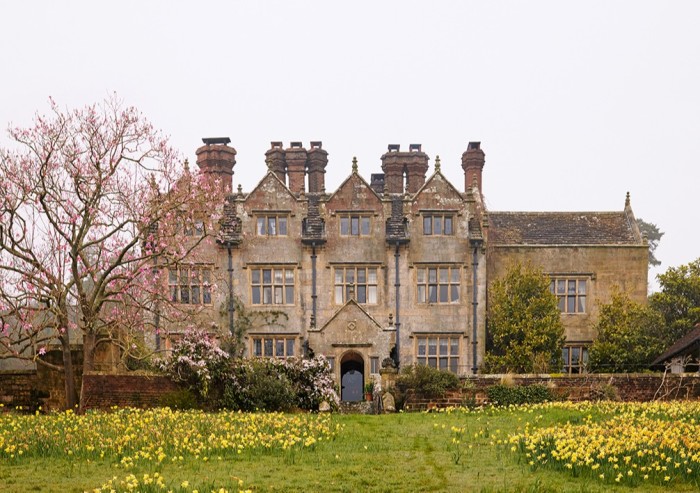
“I have said that horse muck is the most important ingredient on a Michelin-starred menu,” laughs Coward. “Soil is the most important resource – in a garden and on the planet. We garden organically. It’s a constant symposium, with our gardeners bouncing ideas off each other.” But the garden is only half the story; the other half is the kitchen, and the two work together in a careful partnership. “That relationship has grown dramatically since George arrived,” says Coward of his colleague and collaborator, executive chef George Blogg. “I’ve worked with several chefs, and it’s always been difficult to convey a sense of seasonality. As soon as I met George, I thought, ‘At last.’”
Michelin-starred Blogg took over as head chef in 2014 after working at Le Champignon Sauvage in Cheltenham. He learnt his trade at Noma in Copenhagen and Oxfordshire’s Le Manoir aux Quat’Saisons – both famed for their use of homegrown produce – but his approach to food was set at an early age. His allotment-owning parents in Dorset fed him spaghetti squash and asparagus peas long before such things were fashionable.
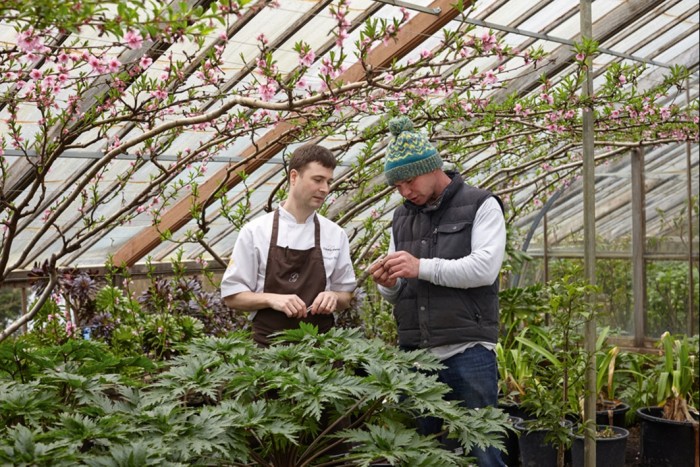
“I feel a responsibility to use the food growing around us,” says Blogg of his menus. “It’s like a jigsaw puzzle, piecing together all this amazing local produce with different techniques. In every dish, I try to have something that represents the garden.” In the height of summer, up to 90 per cent of produce comes from the estate and its surrounding area; seared fillets of John Dory, caught off the Sussex coast, are served with courgettes, confit tomato and aïoli – the latter made with saffron harvested from the garden’s crocuses.
Nothing is wasted; roots, shoots and leaves are all put to use in the kitchen. “With commercial produce, the beautiful leaves of a plant would be discarded; here we can use them and totally transform a dish,” says Blogg, citing the sublime blackcurrant soufflé that’s served with a blackcurrant-leaf ice cream in late summer.
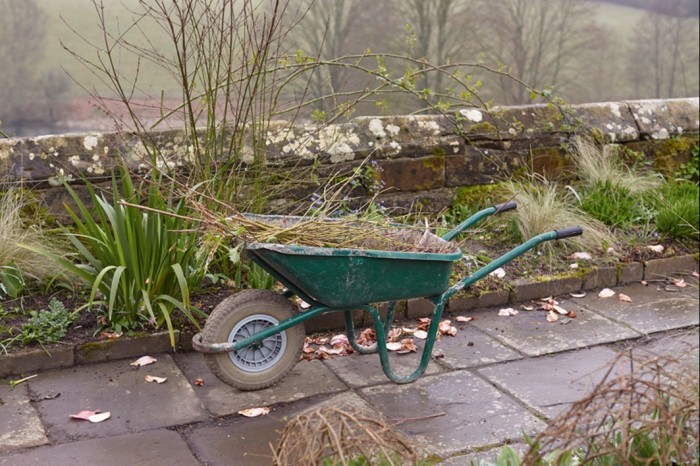
Blogg and Coward are hoping they’ll be accepting guests again come berry season. But perhaps one of the more unlikely outcomes of this crisis has been the growth in interest surrounding food production. Demand for fresh vegetable boxes has soared, with suppliers to restaurants turning their services to the public. And as the 60,000-strong seasonal workforce will likely be unable to travel from Europe to UK farms, local labour will be needed to help bring in the harvest. It’s a conversation in which Blogg and Coward are uniquely placed to play their part. “Hopefully, this situation will make people aware of the importance of growing our own food,” says Coward. “Growing food improves the world around you in so many ways – you have something nice to eat, but there’s also something primeval in nurturing vegetables. It’s an important part of our wellbeing – and that is true both before these troubles and after.”
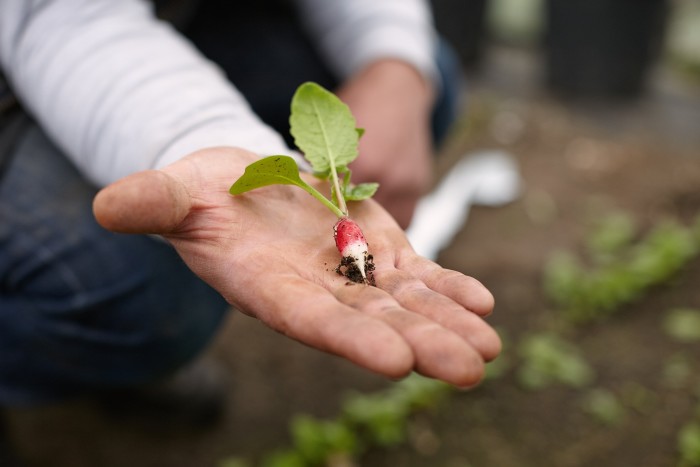
Currently, the duo has time to think about seeds for the next growing season, which will include tried-and-tested plants alongside more experimental crops such as white beans similar to French Coco de Paimpol – which are dried on the vine then stored for use in winter, when they will be braised in stock and served with Swiss chard, chanterelles, sliced lardo and roasted monkfish. Or Karaka Black – a hybrid blackberry/raspberry from New Zealand that is one of many fruits, beans and vegetables grown to be pickled, preserved and stored for use in the leaner months.
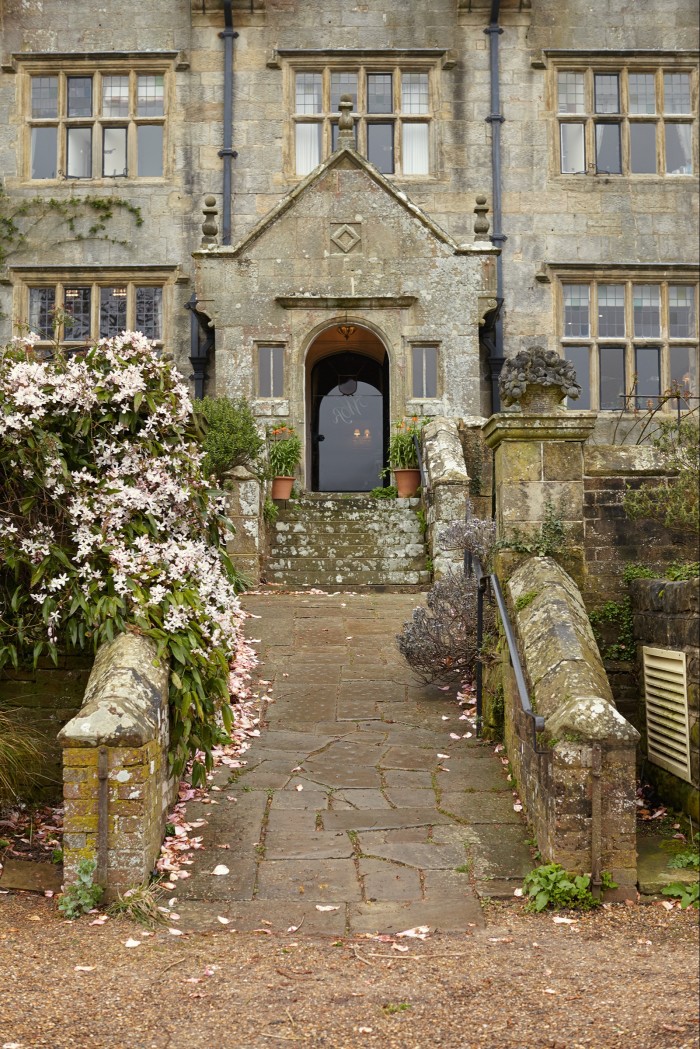
“Our mission has always been to grow ingredients that you can’t buy – where you can only get that quality or flavour from the garden,” adds Coward. That can be through freshness – cutting asparagus right before lunch service to preserve its flavour – or through sourcing varieties that are not commercially grown. “You need to be agile and inventive to work like this.”
They both agree that the perfect showcase of their skills is in the garden salad. Up to 20 different herbs and baby vegetables are harvested daily by Blogg and his team; some are pickled or blanched, others are roasted or left raw. In the abundance of mid-spring it may include beetroot and carrot purées topped with asparagus tips and shavings; bijou radishes, turnips and carrots; tiny frilled sea-kale leaves and wild sorrel; Lilliputian lettuces, coppery fronds of bronze fennel and some crunchy Jerusalem artichoke crisps.
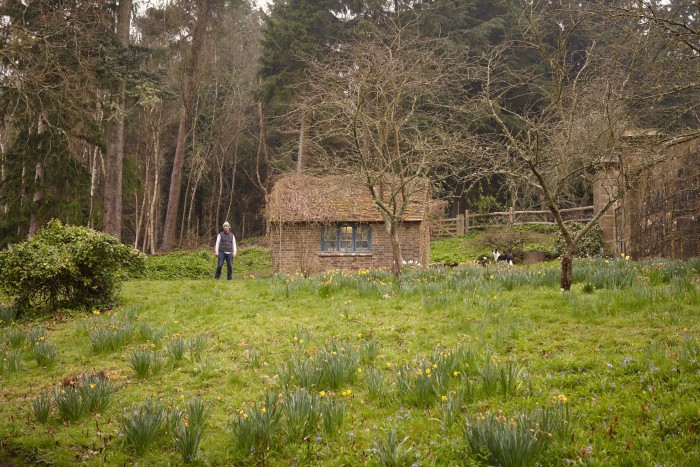
A confit egg yolk from the resident hens is placed in the centre, while edible flowers create an instant visual connection with the garden just beyond the restaurant’s floor-to-ceiling windows. It is, of course, all beautifully seasoned with smoked salt from the on-site smokehouse. “It’s the best dish on the menu,” enthuses Coward. “As a gardener, you don’t have to be a good cook, but you do have to understand it. It’s a joy for me to constantly learn from George about the food I’m growing – and put that knowledge back into the garden.” The provenance of what we put on our plates has never been more apropos.
Comments